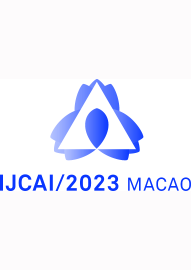Guided Patch-Grouping Wavelet Transformer with Spatial Congruence for Ultra-High Resolution Segmentation
Guided Patch-Grouping Wavelet Transformer with Spatial Congruence for Ultra-High Resolution Segmentation
Deyi Ji, Feng Zhao, Hongtao Lu
Proceedings of the Thirty-Second International Joint Conference on Artificial Intelligence
Main Track. Pages 920-928.
https://doi.org/10.24963/ijcai.2023/102
Most existing ultra-high resolution (UHR) segmentation methods always struggle in the dilemma of balancing memory cost and local characterization accuracy, which are both taken into account in our proposed Guided Patch-Grouping Wavelet Transformer (GPWFormer) that achieves impressive performances. In this work, GPWFormer is a Transformer (T)-CNN (C) mutual leaning framework, where T takes the whole UHR image as input and harvests both local details and fine-grained long-range contextual dependencies, while C takes downsampled image as input for learning the category-wise deep context. For the sake of high inference speed and low computation complexity, T partitions the original UHR image into patches and groups them dynamically, then learns the low-level local details with the lightweight multi-head Wavelet Transformer (WFormer) network. Meanwhile, the fine-grained long-range contextual dependencies are also captured during this process, since patches that are far away in the spatial domain can also be assigned to the same group. In addition, masks produced by C are utilized to guide the patch grouping process, providing a heuristics decision. Moreover, the congruence constraints between the two branches are also exploited to maintain the spatial consistency among the patches. Overall, we stack the multi-stage process in a pyramid way. Experiments show that GPWFormer outperforms the existing methods with significant improvements on five benchmark datasets.
Keywords:
Computer Vision: CV: Scene analysis and understanding
Computer Vision: CV: Segmentation

